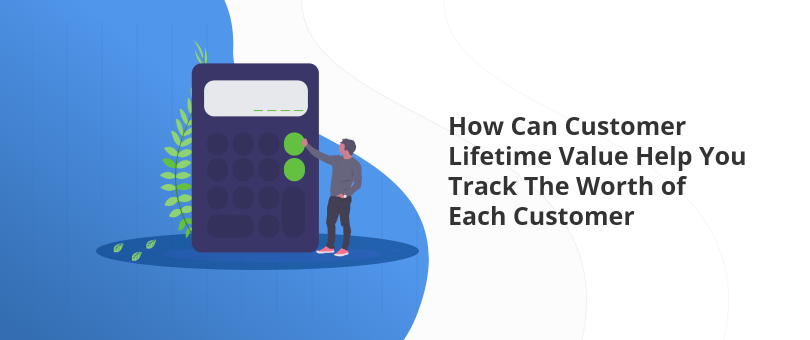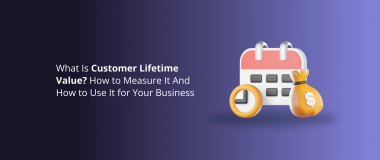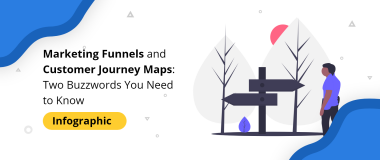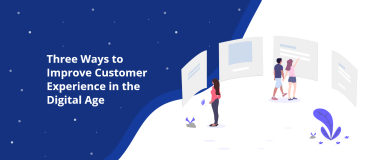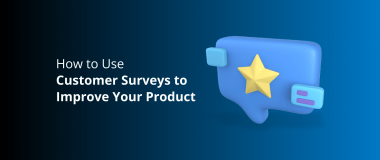Irrelevant to the industry you’re working in, maintaining your business profitable should be one of your top priorities. But, no business can preserve profitability without customers. Everything depends on the value that you provide to your customers and the value that you’re getting back from them for your business.
It’s all about acquiring customers and retaining them as your most valuable assets. This is why Customer Lifetime Value is significant as a business metric. Taking CLV into account can transform the way you run your business. Instead of focusing on getting new customers, CLV helps you focus on improving your retention strategies.
After calculating CLV in one of our previous articles, in this article, we’ll focus on how Customer Lifetime Value can help you track the worth of each customer and predict the value that you’ll derive from each relationship with your customers.
What Is Customer Lifetime Value (CLV)?
Customer Lifetime Value (CLV) is a metric that predicts the overall revenue that you can expect to get from an individual customer. The longer someone purchases from your company or users your services, the higher the CLV and ROI of that customer will be. Knowing the perfect CLV for your business provides you with a clear perspective on the customers that you need to focus on the most.
Each customer is not equal. Studies have shown that the top 1% of your customers can easily be worth as much as 18 times than your average customers. Focusing on cost-effectively attracting your best customers and retaining them will save you a lot of time, money, and effort in the long run.
What Is The Real Benefit of CLV?
Your customers are not only the money that they spend on your products/services. Their value is much higher than that, and it’s your responsibility to retain your best customers.
Besides determining the financial value of customers, CLV can help you put customer profitability in perspective. There are many ways you can optimize your business through CLV, and improve your bottom line in the process.
Some of the biggest advantages of determining Customer Lifetime Value involve:
- CLV allows you to evaluate the cost implications of your marketing campaigns and sales activities.
- CLV also shifts the way you do marketing regarding customer loyalty.
- CLV helps you balance short-term and long-term marketing goals and the ROI of your marketing and sales investments.
- CLV inspires marketers and salespeople to spend less time capturing low-tier customers.
- CLV helps you to improve customer relationships, which always results in better ROI.
Increasing Your CLV
A higher CLV means more revenue for your business. When your number of most valuable clients increases, your business grows as well. Boosting your CLV can be as simple as improving your website or providing a better pricing package. The following are six tactics that will help you increase your CLV and gain more revenue from your customers in the process.
1. Provide Outstanding Customer Service
Good customer service is a must if you want to grow your CLV and keep your customers. Even with a high-end product in your hands, if you don’t know how to communicate and serve your customers, they will leave you for your competition. Here’s what you should consider if you want to get the entire customer experience right:
- Omni-Channel Support: Having a presence on every channel is critical in the business world. Think about your customers and where their attention is. Every day, up to 98% of Americans switch between devices regularly. Ensure that your customer support teams are well-prepared for each of the digital channels and devices. If you have the budget, have a different team of experts assigned for each channel.
- Be There 24/7: People want fast responses from your support reps. This is why being there 34/7 matters. If you can’t provide a 24/7 support, you can at least respond as quickly as possible.
- Monitor Social Media: Around 84% of buyers expect a response to their social media complaint within 24 hours. If they don’t get a quick response, they can even share their dissatisfaction on their social media profiles. Make sure to have at least one team member responsible for DMs and comments about your products and services on each of your social media accounts.
- Provide Live Chat Support: Approximately 80% of clients want real-time responses from companies. The best way to provide a real-time response is to offer a 24/7 live chat on your website. Your website visitors that are using live chat on your website are worth at least 4.5 times more than regular visitors. Moreover, live chat support means that you can provide 24/7 support even when your team is working remotely.
- Offer a Knowledge Base: Nearly 91% of consumers would use a knowledge base if available. It will save your customer support team a lot of time and effort. For example, by using an automated bot, when you want to answer a specific question, you can redirect the customer to the resource of your knowledge base.
2. Listen to Your Customers
Increasing the CLV without being aware of what the customers think of your business can be difficult. Collecting comprehensive feedback is a much better tactic to know exactly what your buyers need. Listening to your customers allows you to focus on the business aspects that enhance customer satisfaction.
Conduct Surveys
There are many questions that you can ask your customers in your surveys, however, you must be cautious in your surveys. A simple survey on your website is perhaps the easiest way to get customer feedback.
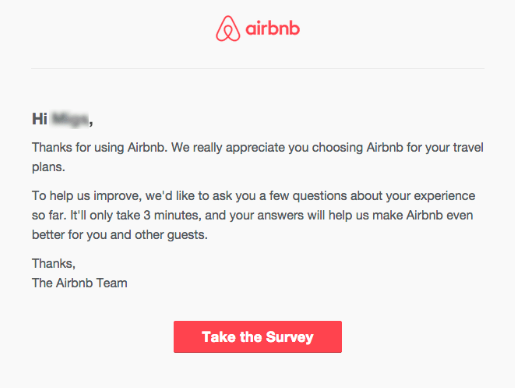
When you structure the survey, make sure that it’s not too long. Also, include open-ended questions if you want to get more detailed responses.
Use Live Chat
You can also use live chat to learn what your customers think when they browse your website. There are several good places where you can include live chat on your site: your pricing pages, service/product pages, and the checkout pages.
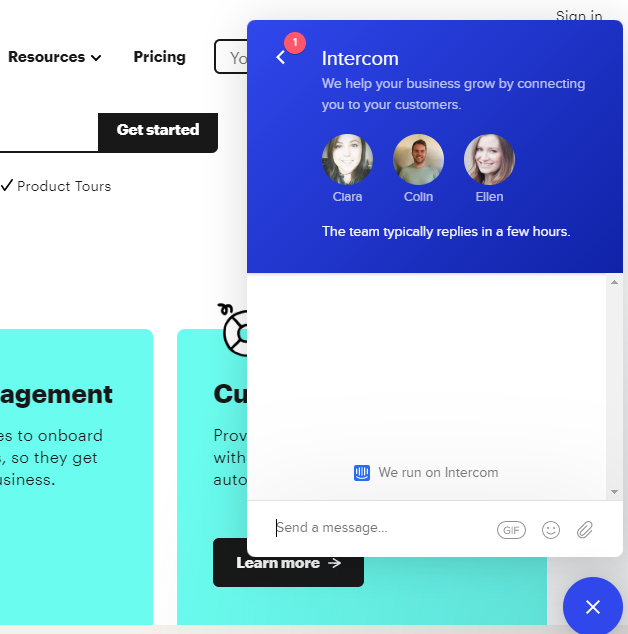
Image source: Intercom
Use Social Media
Social media can be extremely useful for collecting customer feedback. Direct comments, messages, and polls are some of the ways to collect feedback from your users and followers.

Image source: Twitter
Monitor Analytics
Don’t forget about web analytics. Sometimes, the best customer feedback can be found in your website insights. Google Analytics can help you figure out what are the pages that are getting the most attention, and the ones that make the users bounce.
3. Provide Personalized Experiences
Personalization is essential if you want to make your customers happy so they can keep spending money on your products. Around 81% of consumers expect businesses to understand their needs and approach them at the right moment.
If you’re in the B2B industry, personalization is a must, as half of US marketers stated that it is effective with the consumers. In the long run, providing personalized experiences can improve your CLV in many ways, including:
- It can help you deliver the right messages, on the right channel, and at the right time.
- You can enhance the onboarding process by getting familiar with prospects before you welcome them as customers.
- It can help you deliver a more intuitive UI, something that has great returns in conversion rates and overall ROI.
- You can develop personalized in-app messages for each customer segment, increasing the chances of converting clients.
- It helps you deliver better customer support, which is essential if you want to boost customer value in the long run. Better customer support makes the clients feel like they are in a genuine relationship with your business.
Start small with your customer data. Instead of a universal email for every customer, you can include personalized information that will make your customer feel special, which will additionally reinforce the relationship.
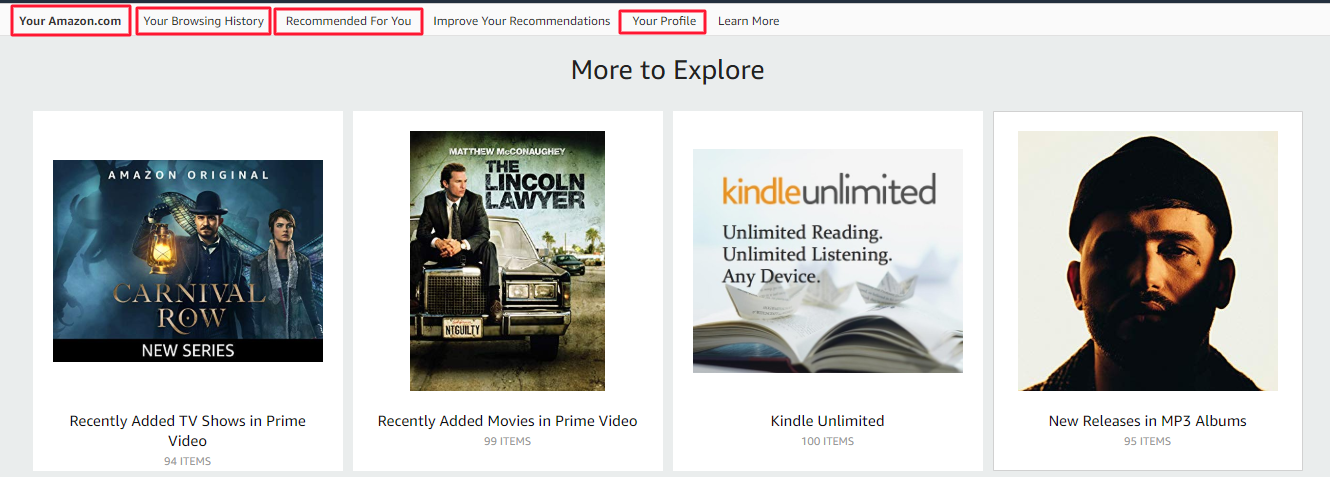
Image source: Amazon
You can also use the customers’ purchasing history to tailor special offers for them. That will show your customers that you understand their needs and that you have an offer that they can additionally benefit from. Your homepage, product pages, and checkout pages can also be used for providing relevant information based on the customers’ browsing and buying practices.
4. Encourage Annual Billing
If you’re offering a recurring service such as SaaS, the amount that your customers will continue to pay for is critical for growing your CLV. The customers that continue to pay for your product bring you regular revenue. On the contrary, the users that pay your product only for a month or two drive very little income, which is not even enough to cover the Customer Acquisition Cost (CAC).
When the clients stay with you for an average of 10 months, it’s easy to convince them for an annual billing cycle and reduce churn. With that, you will generate higher CLV and convince more potential customers in your product/service quality as well.

Image source: Grammarly
An annual billing cycle will also help you to predict your revenue, and improve your business decision-making in the process. The money that you’ll have in your disposal from the annual billing cycle can be used for investments in product development and company growth.
A discounted version of 12-month payments packaged in an annual billing fee is cost-efficient for your clients as well. That’s an excellent convincing point for them to stay with your company.
5. Upsell and Cross-Sell
Upselling and cross-selling are two powerful ways to boost the CLV of your business.
Upselling is selling a more expensive version of your product or service. For example, if you offer SaaS, it could be an invitation for customers to upgrade their basic plans to premiums. Figures show that 70-95% of revenue can be generated by upselling, while only 5-30% from an initial sale.
Cross-selling, on the contrary, is the method of selling a complementary product or service to your customers. For example, someone that wants to buy a web domain might also be interested in web hosting too. If you provide them both, you can cross-sell and raise the value of the purchase.
Amazon is an example of a company that knows how to use upselling and cross-selling and drive extra revenue from each sale.
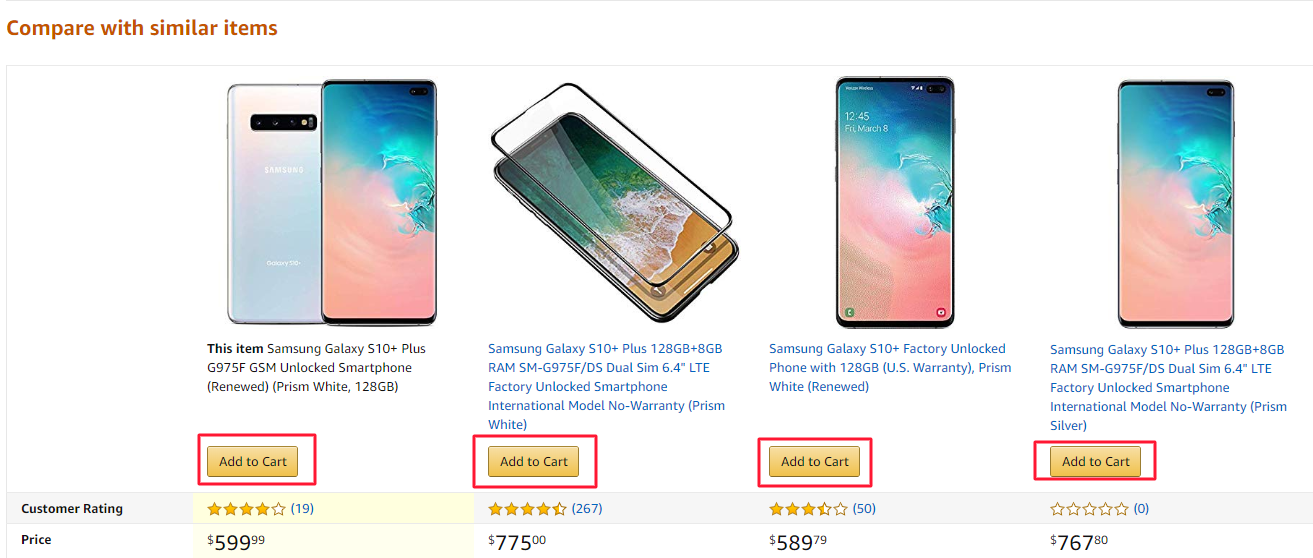
Image source: Amazon
Here are some tips for successful cross-selling and upselling to your customers:
- Bundle Products: Compile various products and services together and sell them at a discounted price. This will raise the purchase value by providing a complementary product combination.
- Short-Term Upgrades: Offer your basic users a free temporary upgrade to your premium plan right after you’ve updated your features. A large portion of the users could make that transition to the premium features when they have the opportunity to do it for free.
- Free Shipping: Who would refuse free shipping, right? But, with a combination of free shipping and minimum order size, it’s even more appealing to the customers. Customers would rather spend their money on shipping on another product.
- Limit Recommendations: Don’t chase away potential buyers with too many choices. Recommend only the essential complementary products. When given the choice, they’d rather decide between three products than ten.
6. Offer Loyalty Programs
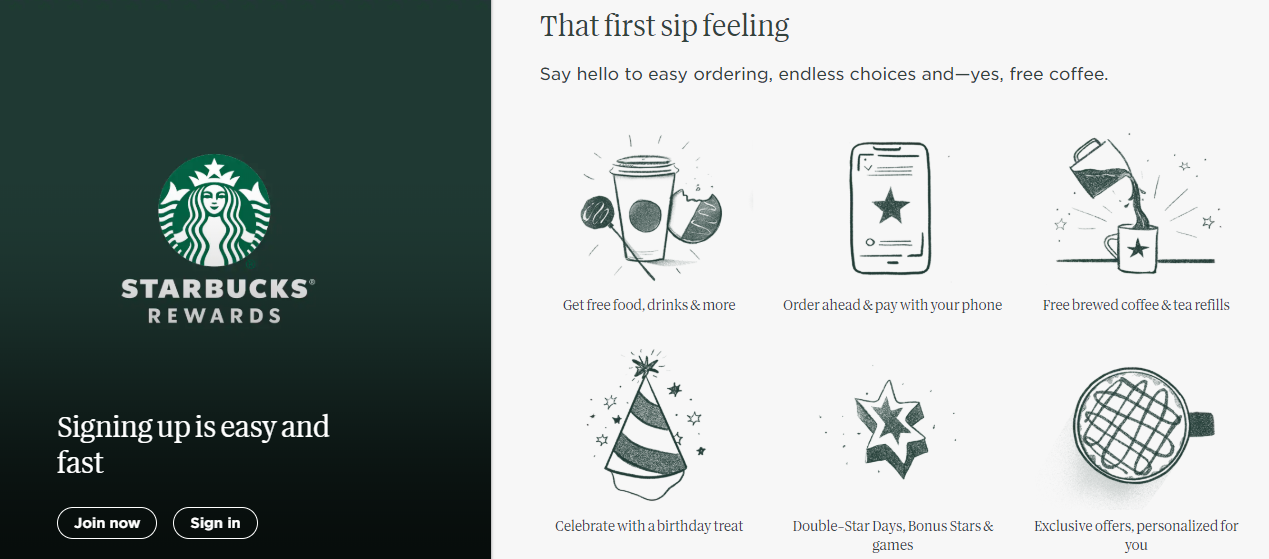
Image source: Starbucks
Loyalty programs are a foolproof way to keep your customers to maximize your CLV. Getting rewarded for each purchase means that more customers will keep returning to your website. Loyalty programs are all about cultivating the relationship with your customers. When it comes to implementing these programs, take into account the following:
- Make them easy to enter and the rewards understandable. Offer relevant information so that customers can anticipate the rewards that they can obtain.
- Reward actions that are not related to spending too. These can include subscriptions, reviews, content shares, etc. That will also show your customers that you truly value them.
- Ensure that the rewards are relevant. If the awards are not relevant, customers will become uninterested and will not participate in the loyalty program. Accordingly, it’s essential to offer different options for the customers, such as gift cards, cashback, event tickets, etc.
Wrapping Up
There’s one significant word to be mindful of when it comes to Customer Lifetime Value as a metric. We’re talking about a Lifetime here. Frequently, it’s much easier to focus only on the statistics and the easy win. If a customer buys only once, how much value have you provided, or gained for that matter?
The goal of CLV is to improve the value of each of your customers. The true value comes from the clients that remain with your business, who are there time and time again to order and use your products. These clients are fundamental to your business. This is why you need to create an excellent customer experience that consumers will always want to take part in.
Provide your customers with a reason to stay with your brand and they will become your most valuable asset and your biggest promoters many years from now.
